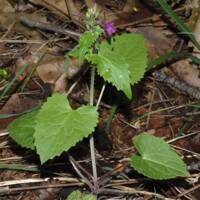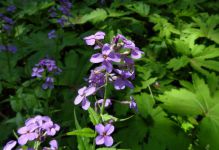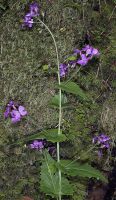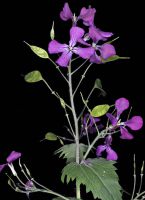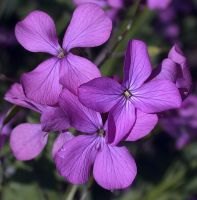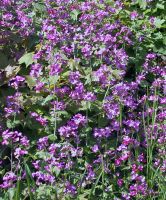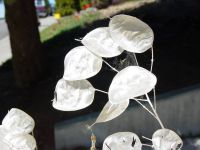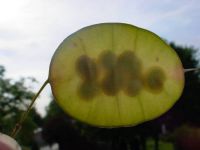Distribution: Occurring chiefly west of the Cascades crest in Washington; British Columbia to California and Utah; also distributed throughout eastern North America.
Habitat: Escaping from cultivation to urban forests, roadsides, and other disturbed areas.
Flowers: March-June
Origin: Introduced from southeast Europe
Growth Duration: Annual
Conservation Status: Not of concern
Pollination: Bees, butterflies
Annual or biennial herb, spreading-pubescent throughout, the stems freely branched, 5-10 dm. tall.
Leaves alternate, broadly ovate, deeply dentate, 4-10 cm. long, cordate and petiolate below, somewhat reduced, rounded and sessile above.
Inflorescence of terminal racemes and smaller, axillary racemes in the upper leaf axils; sepals 4, the outer pair saccate at base; petals 4, bluish-purple to red-violet, clawed, about 2 cm. long; stamens 6; style 6-8 mm. long, beak-like.
Silicles oblong-oval, 3.5-4.5 cm. long and 2/3 as broad, strongly compressed, on a slender stipe 7-12 mm. long; seeds in 2 series, reniform, 7-9 mm. broad.
Publication: Sp. Pl. 2: 653. 1753.
Lunaria inodora Lam.
PNW Herbaria: Specimen records of Lunaria annua in the Consortium of Pacific Northwest Herbaria database
WA Flora Checklist: Lunaria annua checklist entry
OregonFlora: Lunaria annua information
E-Flora BC: Lunaria annua atlas page
CalPhotos: Lunaria annua photos









